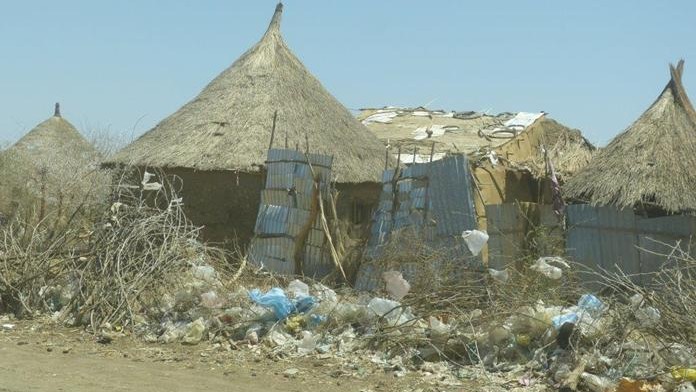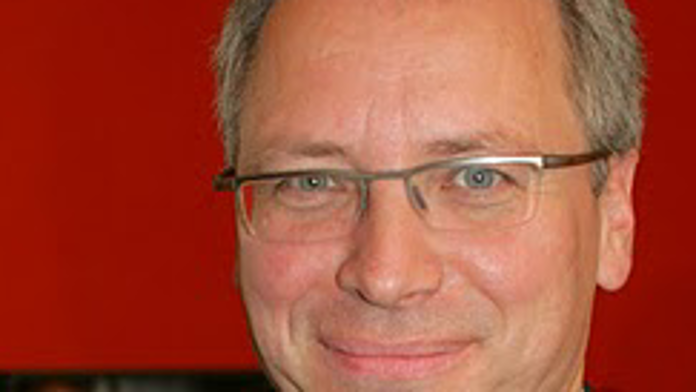News from 2016-09-15 / KfW Development Bank
"Abject poverty and oppressive hopelessness"

South Sudan became independent five years ago. But after a brief easing of tension and euphoria at the creation of the world's newest country, there are no longer any reasons to celebrate. Violence once again broke out some weeks ago. Thousands of people have been fleeing the country and seeking the protection offered by refugee camps in neighbouring countries or in Sudan. KfW Director Burkhard Hinz visited the Shagarab camp in the east of Sudan.
Mr Hinz, right now we chiefly associate refugee camps with providing accommodation for Syrians escaping war in their own country. What are the origins of the Shagarab refugee camp?
Sudan is an important host and transit country for refugees in Africa. Around 460,000 people, mainly from Eritrea and South Sudan, have sought refuge there. Since 2013, a civil war has been raging in South Sudan, the conflict is not yet over and, unfortunately, has further intensified recently. Many of those suffering in any case from catastrophic poverty are now also traumatised. In Eritrea the government, despite initial tentative moves towards a political opening up, is not offering any discernible professional or personal prospects to the numerous young people and has produced a generation of refugees. Every month, an average of 1,100 refugees from Eritrea cross the border near Kassala into Sudan, where the camp is located. But very many young Ethiopians and Somalians are also fleeing to Sudan. Some of them fall into the hands of unscrupulous human traffickers before they even reach the camp.

What did you experience in the camp?
The eastern part of Sudan is one of the poorest parts of that country. Accordingly, abject poverty and oppressive hopelessness are also dominant features of life in the refugee camp. It cannot be compared with the seemingly well-organised camps that we are familiar with, for example, from images in Europe. 35,000 people live in Shagarab, in the desert and in isolation, spread across three camps. Their homes are generally mud huts, surrounded by rubbish. There is no electricity and as good as no toilets. Shagarab has been in existence since 1985. Children are born and grow up there, behind barbed wire. Thousands of them live without their parents, who leave them behind as they make their way to Europe. I can still see before me a six-year-old boy, clearly in need of support, left alone in Shagarab by his mother. The camp also offers the prospect of work or an income for only very few. The perilous journey onwards to Europe is often the only way out. Most of the young men remain there just a short time before moving on.
How do the refugees manage to continue their journey?
They place their trust in human traffickers. There are well-organised gangs of traffickers, who claim on websites, for instance, that each refugee will receive EUR 5,000 on arriving in Germany. They smuggle the people into Europe using one of two routes: either via Egypt or Libya.
What is Germany doing to help the people in these camps?
The Federal Government supports refugees and the communities who receive them in the east of the country, partly via KfW. Specifically, we are financing measures to improve educational opportunities. The target group comprises both refugees who are minors and the children in the region, only about half of whom currently go to school. Protection is also afforded to children who flee on their own and may fall into the hands of human traffickers at the borders. Moreover, improvements are being made to the infrastructure in the communities directly adjacent to Shagarab. For example, classrooms, water supply systems and sanitary facilities for schools are being constructed and renovated, and education on hygiene is being provided. In the camps themselves, the focus is on enabling the residents to earn some money.
How does that work in practice?
We work together closely with the United Nations aid organisations that are active on the ground. UNICEF is investing EUR 6 million. The Office of the United Nations High Commissioner for Refugees (UNHCR) is providing EUR 9 million in support. This money goes towards literacy courses and basic financial or craft training. For example, women attend sewing and embroidery courses, men learn metalwork. The aim is to improve the opportunities for these people to build some kind of future for themselves and stand a real chance of gaining an income.

Share page
To share the content of this page with your network, click on one of the icons below.
Note on data protection: When you share content, your personal data is transferred to the selected network.
Data protection
Alternatively, you can also copy the short link: https://www.kfw-entwicklungsbank.de/s/enzBWrMC.BbsA
Copy link Link copied